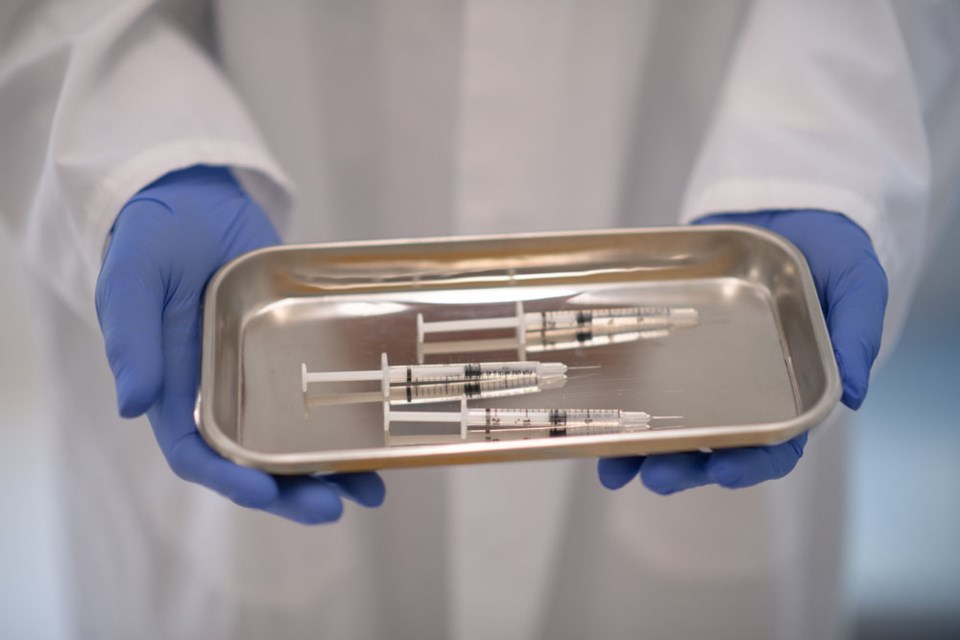One Richmond city councillor has taken a “principled” stance against safe-injection sites while another councillor is equally adamant one belongs in every community in B.C., including in Richmond.
In the meantime, drug users who want to be supervised while consuming drugs in the event of an overdose or drug poisoning need to travel to downtown Vancouver to access a safe-injection site.
Coun. Kash Heed questions who would travel that distance to inject drugs safely.
With dial-a-dope operations delivering anywhere – to someone’s house, to their school or to meet them in their car – drugs can be anywhere, and that’s where people will use them.
“Let’s be realistic, people aren’t going to drive miles to inject (drugs),” Heed said.
Resistance to safe-injection sites is “buried in ideology,” Heed said, and the arguments from what he calls “NIMBYs” are the same arguments made against low-barrier housing and even housing co-operatives.
“Yet, (drug use is) in your backyard,” Heed said. “Their place is Richmond and they’re going to die in Richmond.”
Statistics from BC Emergency Services show paramedics repond to overdoses and drug poisonings almost every day in Richmond - there were 356 such calls in 2022. (Paramedics responded to about 33,000 overdose and drug poisoning calls across B.C. in 2022).
Twenty-eight people died in Richmond in 2022 of toxic drugs.
In November, when the coroner's office had reported 24 deaths from January to October, they clarified 14 of these happened in private homes, four in other residences, three outdoors and three weren't specified.
But Coun. Chak Au argues safe-injection sites “don’t work,” saying the “hard fact” is that, since safe-injection sites were established about 20 years ago, deaths from overdoses and drug poisonings have just gone up.
“I understand the logic, but this is not the solution,” Au told the Richmond News.
“The harm reduction approach alone is not going to prevent deaths,” he added, saying his political slate, Richmond Community Coalition (RCC), advocates for a “comprehensive approach” to dealing with addiction.
He thinks there’s too much focus on harm reduction and not enough on the other harm reduction “pillars,” namely, prevention, treatment and enforcement.
RCC took 'principled' stand against safe-injection sites
During the fall election, RCC released a statement saying their candidates stood in “principled” opposition to safe-injection sites.
Safe-injection sites often have drug-testing and staff are trained to reverse overdoses or treat potentially lethal reactions to toxic drugs.
Heed, however, said, it’s “incredible” people use the excuse of needing more comprehensive services for people addicted to drugs to argue against a safe-injection site and other harm reduction measures.
“Unless we can get to these people who are injecting and dying… you won’t get these people into treatment,” Heed said.
Au believes the focus should be more on anti-drug campaigns, like the DARE program in schools, noting historically there have been campaigns against drunk driving.
He also doesn’t understand why the conversation has turned to “recreational drug use,” he told the News.
“There is nothing recreational about using drugs,” Au said, unlike alcohol which in controlled amounts doesn’t cause harm, he added.
“A doctor wouldn’t say there’s a safe dosage of drugs – even cannabis,” Au said.
Among the Chinese population of Richmond, there is a strong aversion to drugs, Au said.
“They basically reject the use of drugs,” Au said. “Chinese parents tell their kids to stay away from drugs.”
He added that probably most parents say the same thing to their kids.
Heed pushed for first safe-injection site
Heed was head of the drug squad in the early 2000s with the Vancouver Police Department (VPD) when people were overdosing, using dirty needles – often passing along diseases like HIV and Hep-C – and using puddle water to mix with their drugs.
This was when he got on board pushing for a safe-injection site, largely at that time to prevent the spread of diseases.
But what really made the first safe-injection site a reality was the political will to get it done.
Then-Vancouver Mayor Phillip Owen was at first adamantly opposed to a safe-injection site, but he realized the status quo wasn’t working and did an “about turn,” Heed explained.
Heed also faced opposition within his own police force to a safe-injection site, some of whom were “absolutely opposed” to the idea and he heard “nasty” comments made about himself.
“I resisted that and moved forward – I knew what we had to do in Vancouver,” Heed said.
In the end, six safe-injection sites – or “safe consumption sites” as they’re also called – as well as an unsanctioned one inside St. Paul’s Hospital were set up.
At first, it was to prevent blood-borne diseases, by having clean supplies available, and to get open-air drug use off the street, but now they are better known as places where drugs can be tested and people can use drugs while under supervision in case of a drug poisoning or overdose.
Street drugs are increasingly cut with fentanyl, carfentanil and benzodiazepines.
With the health authority, the city and the police on board, these sites have continued to provide life-saving measures for people using drugs.
Heed believes there’s a need for a safe-injection site in Richmond – he suggests within the vicinity of Richmond Hospital – and in every community in B.C.
In fact, some small communities like Squamish, whose population is under 20,000, have safe-injection sites.
In a statement, Vancouver Coastal Health said they deliver substance use services “based on community needs/demands, and overdose risk.”
Services in Richmond include prescribing methadone and suboxone, providing Naloxone kits, clean needles and other drug-use supplies, harm-reduction education, referrals to other services and counselling support.
In Richmond, two temporary modular housing buildings and one other supportive housing building have safe-injection sites exclusively for their residents.
Some opponents to safe-injection sites cautioned against it becoming a “honey pot,” that is, attracting more drug users to its location, Heed explained.
“That absolutely did not take place (in Vancouver),” he added.



